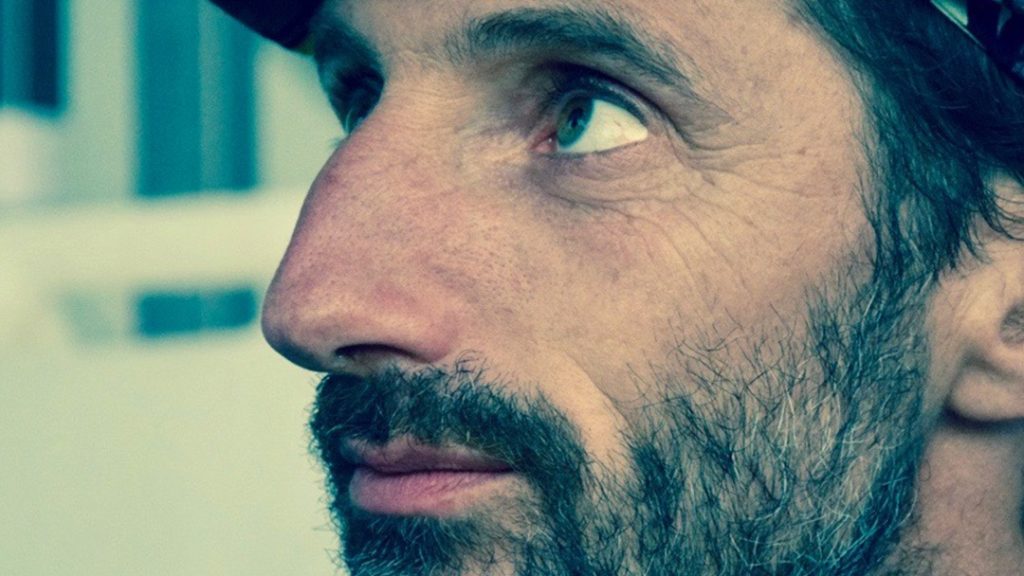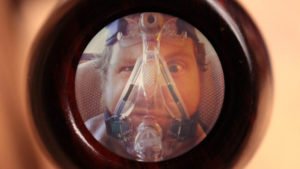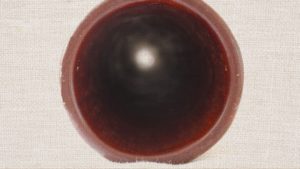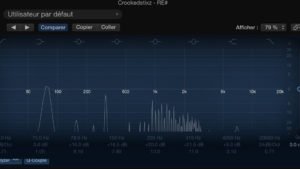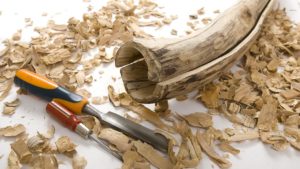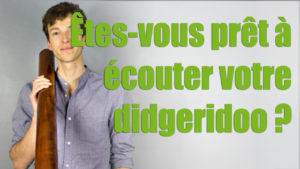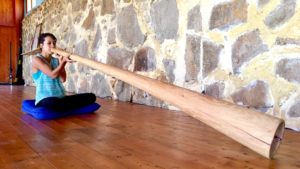This article is an automatic translation, it will be proofread and corrected by a “human” translator. If you want to help translate Wakademy, feel free to contact me!
To help you get to know the main didgeridoo crafter better, I decided to create some interviews. The goal is simple: to allow you to discover the state of mind of each of them and their way of proceeding.
Because to discover the character of the crafter is to begin to glimpse his instruments.
We are starting this series of interviews with David Desfois, a didgeridoo factor who lives in Bretagne (France). In 2005, David created his company kan ar c’hoad, officially starting his activity as a didgeridoo crafter. Over the years, he has become a crafter recognized for the quality of his work and his capacity for innovation. So without further ado, let’s go to the questions!
First of all so that the readers know you a little better, can you tell us how you discovered and started the didgeridoo. What did you like about this instrument…?
In 1996, I saw a report on the Aborigines of Australia. The sound of the didgeridoo really caught my eye. The following summer during the Francofolies in La Rochelle, I met Christian Wewerka. He was selling bamboo didgeridoos in the market. I was completely fascinated by the sound universe of this instrument. I bought one direct. I went to see him every day of the festival to teach me how to play it. I had become completely addicted to the sound and the effect it has on my body. It was really good ! And then the game seemed very intuitive to me and very easy to learn.
Those who follow my blog already know, the didgeridoo comes from the Aborigines of Australia. Have you already gone to meet them? Do you feel connected to this culture or is it rather the instrument that speaks to you?
I have never been to Australia, but I would love to go. I don’t know much about their culture, but I have a lot of respect for that culture. It is first of all the instrument that speaks to me.
Playing the didgeridoo is already not very common, but then make some…! What attracted you to this job? What are you looking for in manufacturing?
I wanted to get into manufacturing because I found that the didgeridoos offered for sale did not satisfy my ear or my breath. I thought there was a way to find other sound textures and other gameplay fluidities to explore.
It piqued my curiosity. I immersed myself in musical acoustics treatises and I studied different techniques of making musical instruments. From these explorations I developed my method of design and manufacture.
Currently what I like is to make the instrument evolve in the contemporary musical context by offering the possibility of changing notes during play like any other instrument.
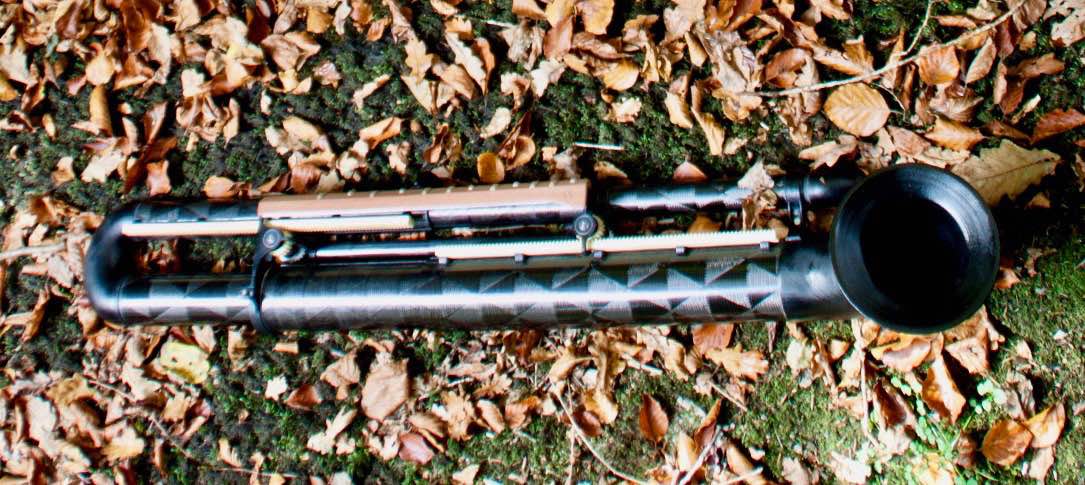
The Korn Bass, a chromatic didgeridoo at the crossroads of the didgeridoo and the slide trombone.
There are many ways to make didgeridoos. Could you explain us your way of proceeding? How do you conceptualize your didgeridoos? What are your manufacturing steps?
First of all, I define the objectives of the sound, that is to say: the note of the drone, the notes of the over-vibrations and the timbre; and then the type of play: rhythmic, flow, meditative, fluidity… The form is also an important parameter: straight, curved. Then, I look for the bore corresponding to all these parameters thanks to an acoustic modeling software that I have developed. Then comes the workshop phase. For the straight sections, I work with a wood lathe for both rounding and digging. For this I use large bits with extensions and turner digging tools. With this method, there is no longitudinal gluing. Didgeridoos are made up of several nested and glued sections.
For the curved parts, I work with a milling machine. I obtain two half-shells which are assembled by a longitudinal gluing. To avoid unpleasant surprises due to the natural deformation of the wood, I work the pieces of wood in several stages. They are first sketched out. Then I let them dry and warp for several months. Once stabilized, I rework them to put them on the market. I assemble, test the instrument and make some adjustments if necessary to match the set goals. By working with these tools and this process, I manage to have a good precision of the bore and a good reproducibility. And for the finishing touches, I impregnate the wood with oil. I like the rendering in terms of sound and touch.
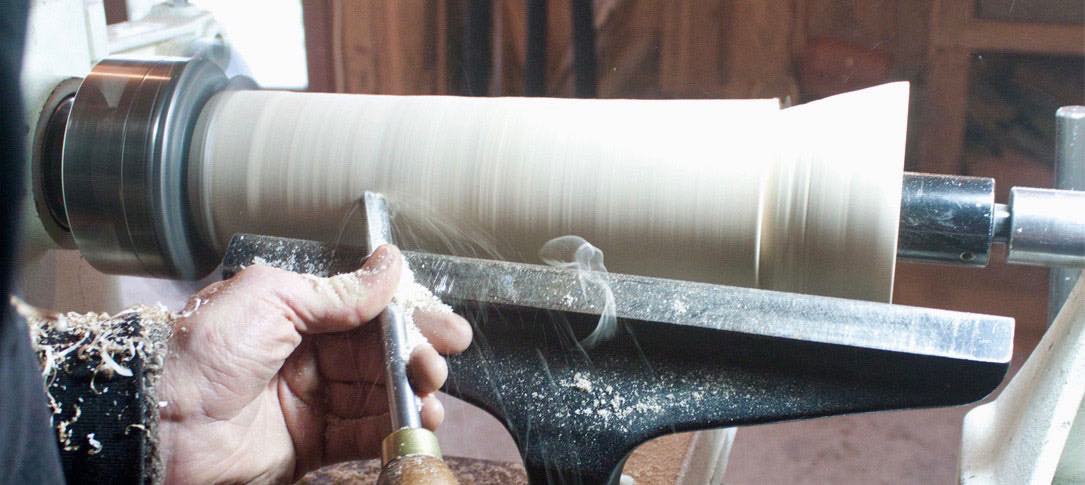
In terms of materials, what do you use in particular? Local wood? Exotic? Other materials?
I only use local essences in branches harvested and dried by myself or in trays that I buy. I also use brass tubes for the Kromm Boud scenes.
For the bamboo, I will cut it in a bamboo grove in Brittany.
For the Korn Bass, I use composite materials: Carbon fiber and polyamide tubes in 3D printer. It’s a lot less fun to work with, but that’s what is currently best suited for the Korn Bass.
You make several kinds of didgeridoos. Can you tell us about your different ranges of instruments?
My range of instruments goes from beginner to professional. For beginners, I make burnt bamboo didgeridoos. They are very easy and very affordable instruments. For advanced players, I make straight didgeridoos. At the level of the bores, I focus my work around large bores and bores with resonance balls.
For the stage and the street, I propose the curved didgeridoos Kromm Boud. Regarding the bore, it is often tailor-made, but I also have my bore standards.
And finally the last one created: The Korn Bass, a chromatic didgeridoo at the crossroads of the didgeridoo and the slide trombone.
You just told us about Kromm Boud and Korn Bass, these are some intriguing names! Can you tell us more about these two instruments ?!
The Kromm Boud means the curved drone. The conventional form of the didgeridoo imposes a fairly static position and the musician is often the least well placed to hear his music. From these observations, I wanted to create a form which allows the musician to be free of these movements as with any other wind instrument and to get along well. So I bent the instrument to have it close to the body, to wear it with a harness and to bring the pavilion closer. The shape recalls that of a saxophone, a bass clarinet or a tuba depending on the model. The gain is really appreciable for playing standing on stage or in the street. And getting along well allows you to be much more precise in your game!
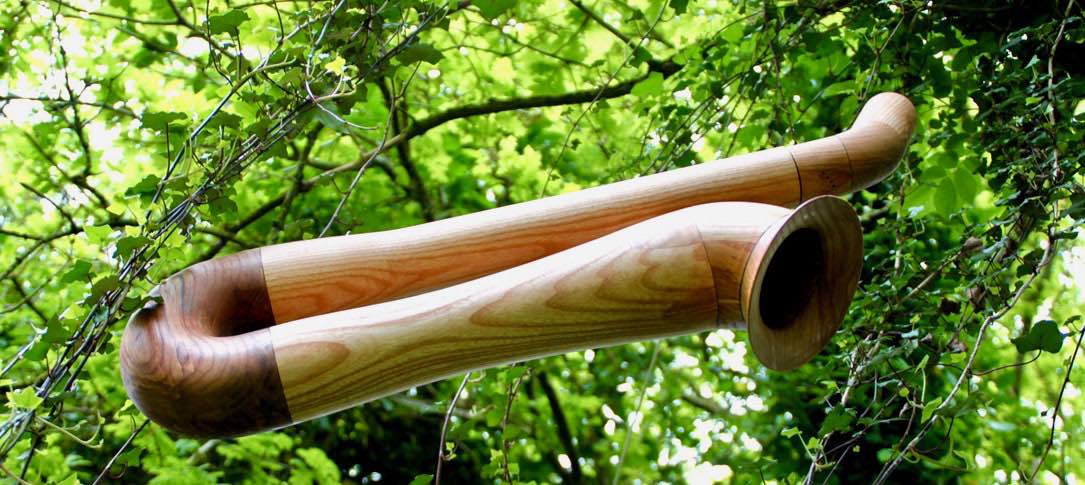
The Kromm Bout allows you to play standing up without being cluttered.
The Korn Bass means the serious trunk. When one associates the didgeridoo with other musical instruments, its monotonic character can become a constraint to the composition. We are often obliged to have several instruments. The other didgeridoo makers have found interesting solutions with backstage or removable sections, but that doesn’t allow you to easily change notes in the same song.
I wanted something more flexible, a bit like a slide trombone and with good acoustic qualities. It took me three years of development to perfect the bore offering two playing octaves, the deployment mechanism of the double slide and the construction in composite materials. I have often told myself that I was completely crazy for having embarked on such a project! But I got there.
Now, I can’t wait to hear what the first four daring Korn Bassists will compose with this instrument: Zalem, Sylvain Jargot (Oboréal), Simon Goudo (Kid) and Ludo Winki.
David Defois in full demonstration of the Korn Bass
Do you make custom didgeridoos?
Yes, with great pleasure. It is the occasion for fascinating exchanges: the musician describes to me what he likes to play, what he would like to play, I listen to him, I decode his requests in my language of didgeridoo factor. What is really pleasant is when the musician plays what I had imagined hearing with his instrument. There, I tell myself that I did my job well and I’m happy!
Obviously, making a good didgeridoo takes a lot of know-how and research. If you had one piece of advice to give to someone who would like to try the adventure, which would it be?
First try lots of didgeridoos and observe their piercing. He can get a good idea of the timbre, the desired playability and the bore profile that goes with it. For tuning, there is a way to model the bore with the DidgMo software which is freely accessible. If it is for someone who wants to make it his job: especially since he does not imagine that he will be able to live from this profession, it is a niche market. You might as well plan on another source of income from the start to live your passion without too much torment.
After so many years with the didgeridoo, do you have an anecdote or a vivid memory to share?
For some time now, two people were very interested in one of my didgeridoos. But they did not dare to take the step of buying. They would drop by my booth regularly to try it out for long sessions. One of the two borrows it to go and play on the free stage. Obviously during this time the other passes and the coveted didgeridoo is no longer there. Little moment of stress! Back from the free scene, the first comes back completely annoyed: he has not succeeded in making this didgeridoo sound, although he knows it well. The second returns later, he sees the didgeridoo again and is surprised that it is still there. I tell him that the owner has not picked him up and he replies that it is normal since he is the owner. I believe this didgeridoo chose its owner!
Do you have specific plans for the future?
First of all, I have the marketing of the Korn Bass to develop. It’s already a big job! Then, I would like to develop the Kromm boud by increasing its range. And then I have an old project of almost 15 years already that I would like to bring to fruition. It is a method of writing a score dedicated to the didgeridoo based on the writing of the articulations using an adapted phonetic alphabet. The basis of the system is operational, I still have a lot of redaction work.
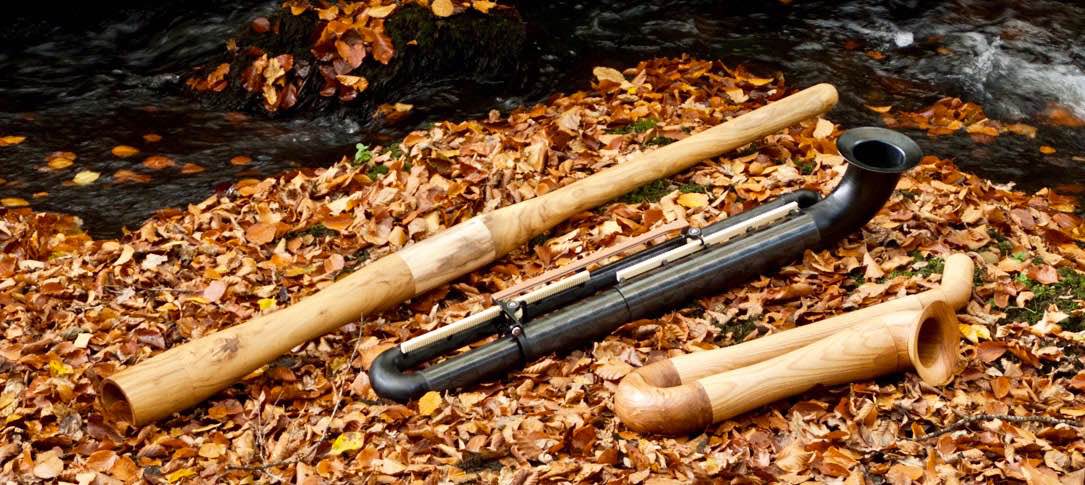
Finally, if a player wants to discover, see try your instruments, what should he do? Where can he try them? He can come to my workshop, preferably by appointment. That way we take the time to try and discuss. You can find me at my stand during festivals: Didg2Didg, Le Reve de l’Aborigène, l’Arbre Qui Marche, Tribalelek (see also: What didjeridoo festivals to do this summer? ) I indicate on my website and Facebook page the festivals I go to.
And finally, I have some instruments on deposit at Didgeridoo Passion .
A big thank you David for agreeing to answer my questions. Your answers should help readers get to know you and your work better. I wish you the best in all your didgeridoo-esque projects!
As for you reading this, feel free to comment and ask more questions in the comments. I’m sure David will be happy to enlighten you.


